What ethnic musical instruments are there in Dunhuang frescoes?
Those exquisite musical instruments that seem familiar but cannot be named,
What are their real bodies?
Are they still alive?
What would it sound like if it was recovered?
What ethnic musical instruments are there in Dunhuang frescoes?
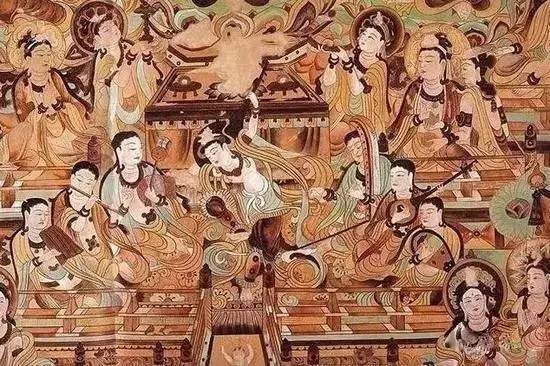
The Mogao Grottoes, which have experienced ten dynasties from the Northern Liang Dynasty to the Yuan Dynasty, have a total of 492 caves preserved in the historical trajectory of nearly a thousand years. Among them, there are as many as 240 caves related to music themes, accounting for about half of the total number. The importance of music is self-evident.
These music murals are not only a true portrayal of the musicians at that time, but also a key to unlocking the mystery of ancient Chinese music history. So, what musical instruments are there in Dunhuang frescoes?
Next, we selected some Dunhuang musical instruments according to the playing methods of musical instruments (plucking, blowing, percussion), corresponding to the magnificent murals of various dynasties, and conducted some micro-textual research.
PIPA
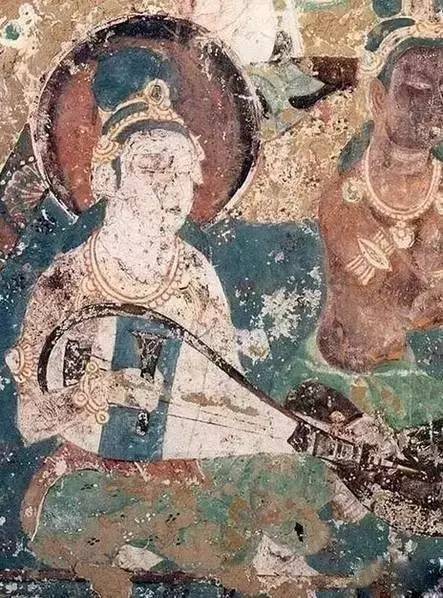
Among the plucked instruments, the pipa is the most representative. There are more than 700 pieces painted in the Mogao Grottoes alone. It can be found in small instrument groups, large-scale warbands, and even self-sounding drums. Physically, its sound box is pear-shaped.
The neck is in the form of a curved or straight neck. There are four strings, and both ends of the strings are provided with shanks and bindings. Spike and water hyacinth on the panel. If you look carefully, you will find that images of various musicians, such as Feitian, Tiangong, Yaksha, and Bodhisattva, are scattered in every corner of the cave.
WUXIAN
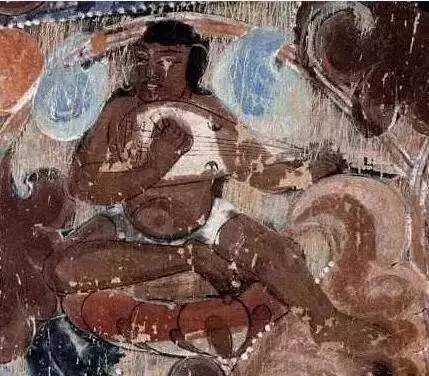
Wuxian is also known as the five-stringed pipa. The shape of the pipa is the most recognizable to the public. As the name suggests: straight items, five strings and five columns. Originated in India, it was introduced to China via the northern foothills of the Tianshan Mountains along the Silk Road. The shape and performance of the instrument are similar to those of the four-stringed pipa above.
It was once prevalent in the Tang Dynasty, and gradually disappeared after entering the Song Dynasty, and was replaced by the four-stringed pipa. Unfortunately, this musical instrument has not been passed down in our country. Today, there is the only real pipa with five strings and straight items passed down from the Tang Dynasty: Luodian red sandalwood five-string pipa, which has been preserved in Shoso-in, Japan. As the treasure of the town hall, each exhibition will attract cultural relic lovers and historical researchers from all over the world to visit the exhibition.
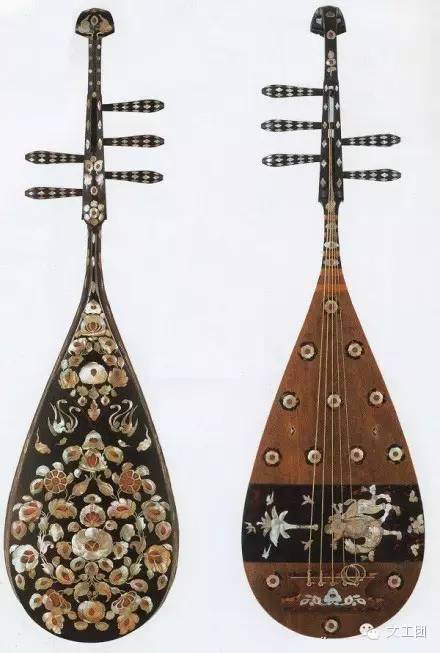
The five-string pipa with luotian and red sandalwood hidden in Zhengcangyuan
Ruan Xian
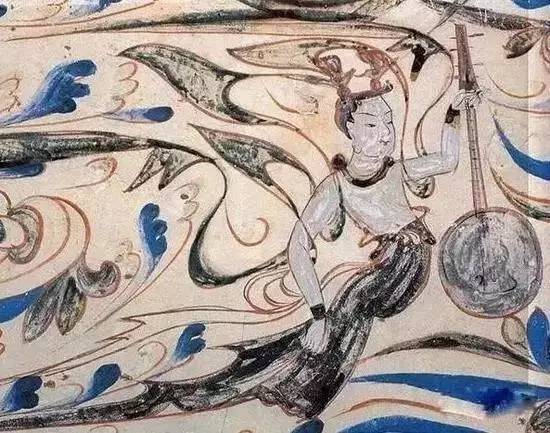
Ruan Xian belongs to Pipa and the like. The word appeared in the Tang Dynasty. It was named after Ruan Xianshan, one of the Seven Sages of Bamboo Forest in Jin Dynasty, played this instrument. In shape, the sound box is a perfect circle.
Neck length, four strings, twelve frets. It shares a very similar fate with the five-stringed lute. After the Tang Dynasty, it gradually lost its mainstream status and was replaced by the Yueqin of the Song Dynasty.
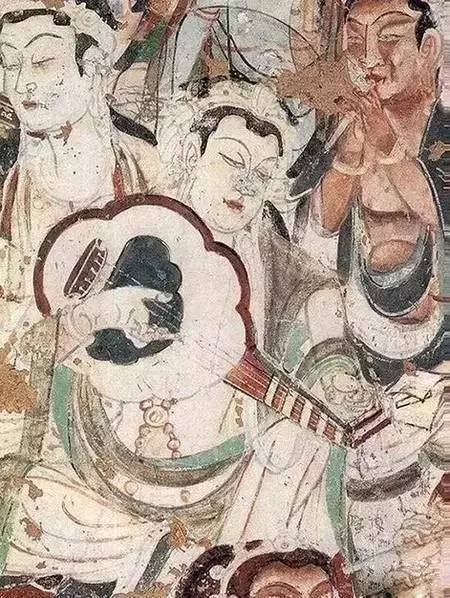
However, a large number of its figures are left in the Dunhuang frescoes. Some bodies are decorated with heavy colors, while others are shaped like petals.
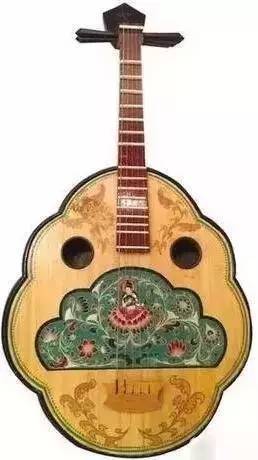
Restored Lace Nguyen
Konghou
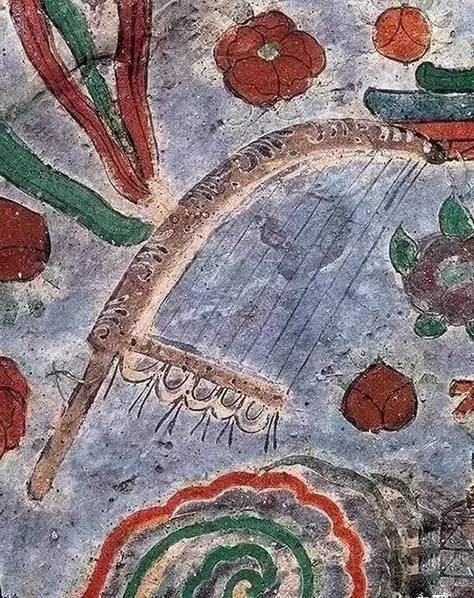
As a foreign musical instrument, the Konghou also played an important role in the court music of the Sui and Tang Dynasties in my country. In this regard, it is also echoed in Dunhuang frescoes: the number is second only to the pipa, with about 200 pieces. In terms of shape, the early Konghou was mostly a triangular frame with fewer strings.
Most of the Konghou in the Tang Dynasty were painted with exquisite border patterns, ornate decorative pendants, and the number of strings increased. Despite this, after entering the Song Dynasty, it was still difficult to escape the fate of decline. And its once glorious history can only be fixed in the Dunhuang murals.
piano
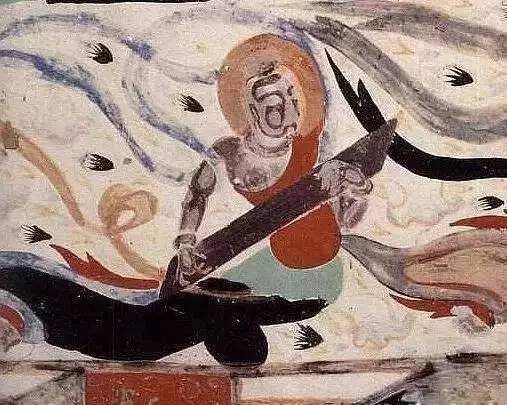
Feitian is not holding a washboard. piano. During the Han and Jin Dynasties in my country, the shape of the seven-stringed thirteen emblems was established and has been passed down to this day. In the "Book of Songs Guanju", there are also verses such as "My Fair Lady, Qin Seyouzhi", the loneliness of the Guqin has been doomed from the beginning of its birth.
zhen
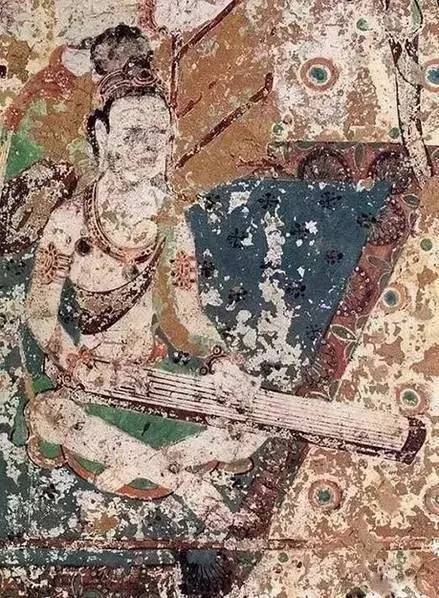
Compared with the guqin, the earthly nature of the guzheng is formed in compliance with history. It was originally five strings, and gradually increased to the Tang Dynasty, forming a pattern of coexistence of twelve strings and thirteen strings. The number of strings in modern zheng is as many as 26, and it can even be freely transferred.
Next, regarding the wind instruments, we might as well start with the following picture of the repayment scripture on the north wall of Cave 154 in the Middle Tang Dynasty.
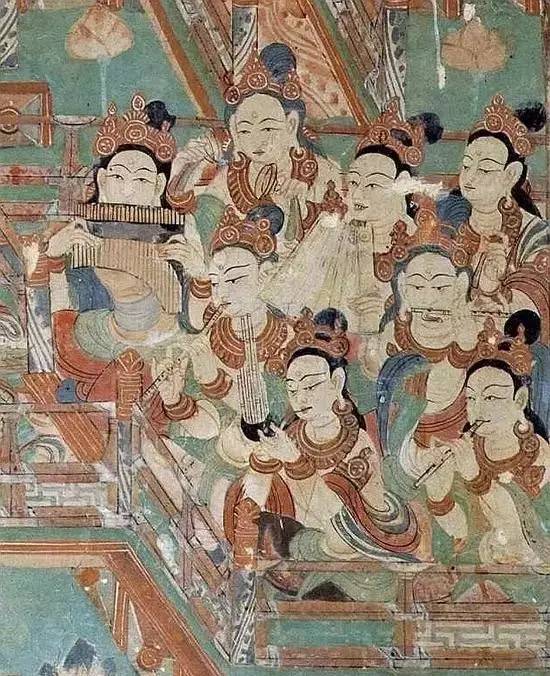
Sheng
In the picture above, the two musicians in the first row. The left body is playing the sheng. This is a bamboo reed musical instrument, consisting of a reed pipe, a bucket, and a mouthpiece.The lengths of the reed pipes are uneven, the sheng bucket is round and has the form of a circle, and the mouthpiece is in the shape of a teapot. The one on the right is playing 筚穥. Its shape is very close to that of a recorder. If you do not distinguish carefully, it is easy to cause confusion. Compared with the body of the flute, it is slightly shorter and thinner. There is a whistle at one end, and the position of the finger is on the upper side.
shudi, hengdi
In the second row, the left and right musicians played the recorder and the horizontal flute respectively. Among the wind instruments, the horizontal flute has the same status as the pipa, and it has always been linked in the historical context of nearly a thousand years.Judging from the various dynasties painted by Dunhuang, the specifications of the flute body, the number of holes dug and the playing method are not uniform. Interestingly, in the large-scale classic paintings of the Tang Dynasty, the status of the horizontal flute seems to be irreplaceable. As an indispensable high-pitched instrument in a band, it is sometimes even used several times in a row. The recorder is usually seen opposite the horizontal flute. It has a longer flute body and a mouthpiece. When playing, hold the flute with both hands down.
paixiao
The musicians on the left in the third row play the pan flute. It is a bamboo braided wind instrument. In Dunhuang frescoes, there are various forms. The thickness, length, number of tubes and patterns of the tubes are different. The other two musicians played the clapper and the clapper respectively. From this, the prosperity of large-scale court music and dance in the Tang Dynasty can be seen.jiao
In addition, there are horns. A relatively primitive instrument. It often appears in the images of the fighting between the two armies, and is mainly used to call on the army and boost morale. Because the sound is too rough and single. Therefore, it does not apply to the band.xun
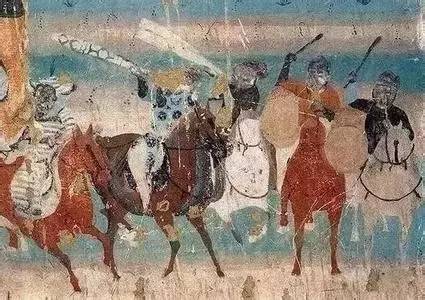
xun. As early as the Zhou Dynasty, it was included in the "earth" class of musical instruments in the "eight-tone" classification. This instrument is the only example in Dunhuang. In the picture, the musicians hold xun in both hands, and the number of sound holes is unknown.
hailuo(French conch)
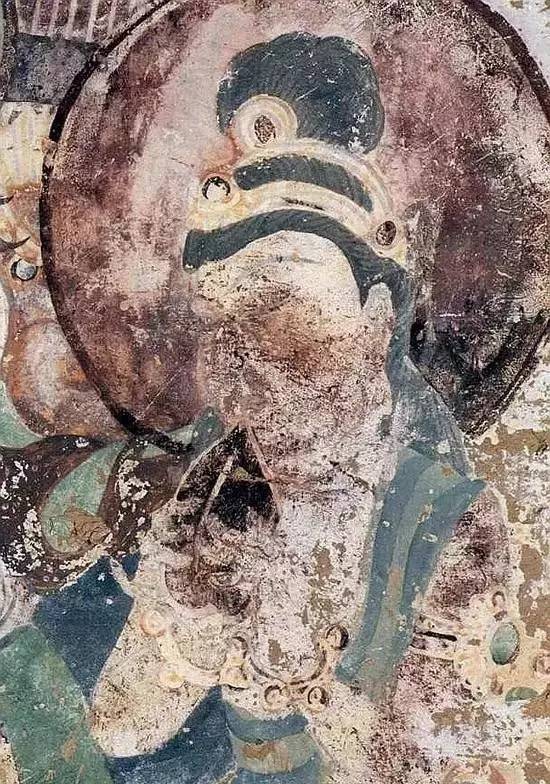
This wind instrument is not easy to recognize. Don't think that the Bodhisattva is eating peaches or sweet potatoes. conch. Also called falu, or shell. In the "Lianhua Sutra of the Wonderful Law", it is recorded that "now the Buddha, the World Honored One, wants to speak Dafa, rain the Dharma rain, and blow the Dharma conch." It can be seen that it has the "dual identity" of a musical instrument and a Buddhist instrument.
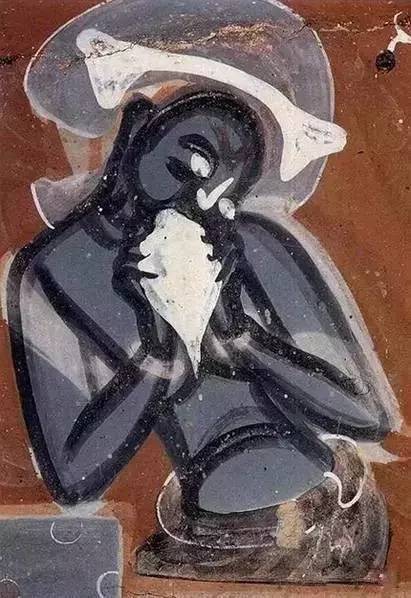
With the gathering of countries in the Western Regions in the Tang Dynasty, the use of foreign musical instruments in my country reached a historical peak at this time. In particular, percussion instruments from India. These waist drums, Jie drums, and Tra drums have also left historical imprints in the Mogao Grottoes.
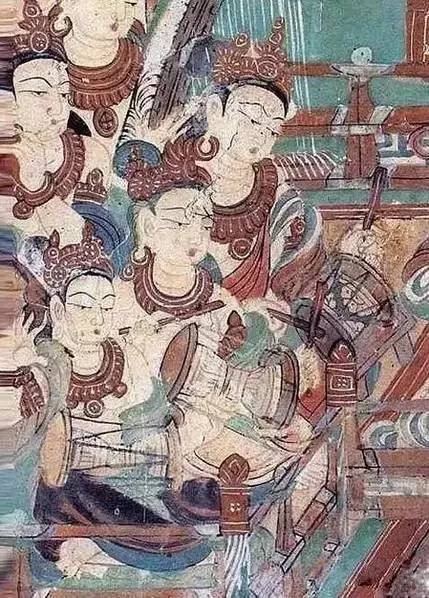
yaogu
In the picture above, the first two musicians are playing the waist drum. The shape of the drum is like the bottom of two bowls butted together. Both ends of the drum head are tied with ropes. When playing, you can either slap the drum face with both hands, or hang it diagonally in front of your chest and hit it with two hammers. The third musician played the Jiegu. The body of the drum is in the shape of a straight carcass, and the two ends are implicated by ropes. When playing, it is placed horizontally on the knee and struck with drumsticks.dalagu
Similarly, there are also tra drums with ropes tied at both ends of the drum surface. The shape of the drum is a flat barrel. The diameter of the drumhead is slightly larger than the drum body.qigu

Interestingly, when those drums that originally existed in historical records appear in the murals in a different and vivid way, they will give people a strong sense of sight. For example, in the passage of "Tongdian Music Four": "Qi drum is like a lacquer bucket, and its big head is set with a navel on the drum surface, like a musk navel, so it is called Qi drum." The above picture is a detailed explanation.
Another example is the description in Chen Yang's "Book of Music": "The left hand holds the moor, the armpit holds the drum, and the right hand strikes it as a festival." As shown in the figure below.
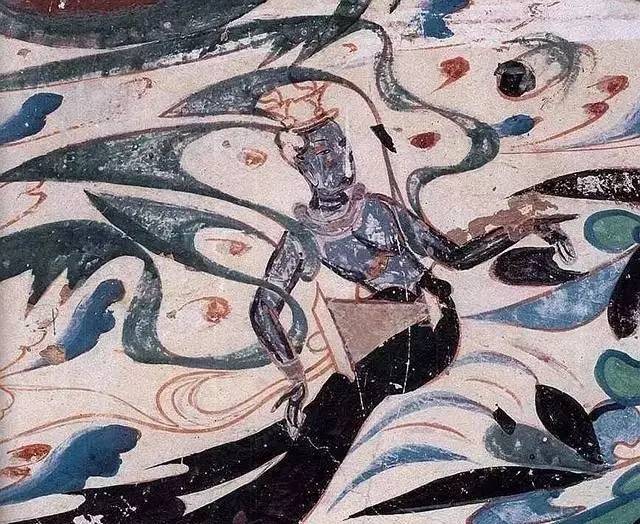
yangu
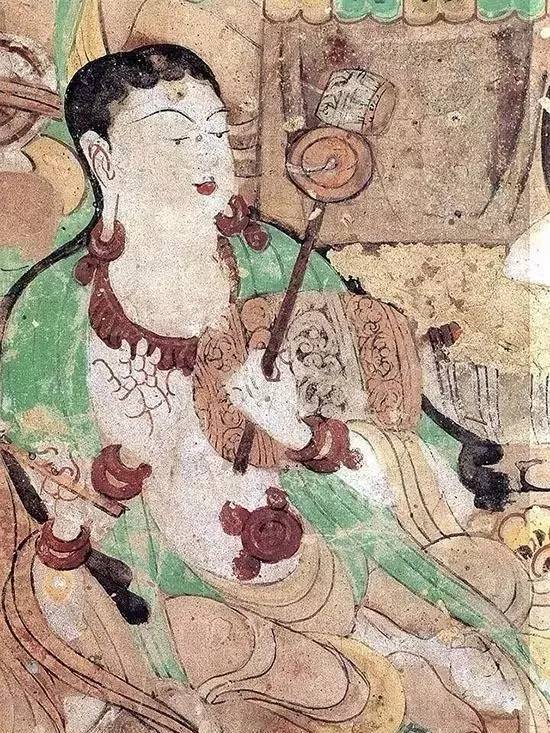
"Old Tang Book Music Records" also depicts a kind of eaves drum in the fresco: "The eaves drum is like a small urn, and it is first lacquered with leather."
Seeing this, it is not difficult to find that the appearance of these percussion instruments is not accidental, it is in line with the historical process. Especially in the Tang Dynasty, it became an indispensable instrument in the band. And there are rules to follow in terms of instrument configuration and arrangement. In addition, there are many other musical instruments in Dunhuang frescoes, such as thunder drums, square bells, bells, and gongs, which are not listed here one by one, but it can be seen that percussion instruments were popular and numerous at that time.
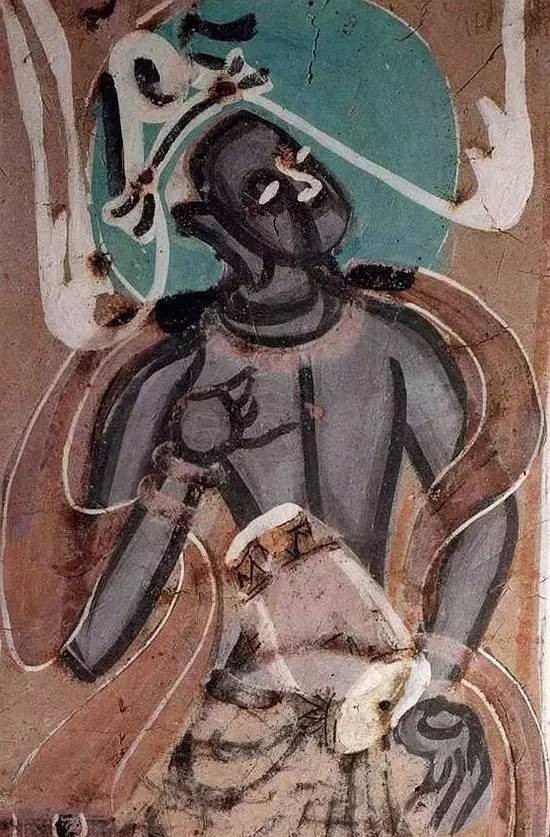
Three types of instruments, plucked, played, and percussion, come together, and the maiko in the middle forms a center-symmetrical form with the bands on both sides. Although, this cannot be regarded as a realistic basis for the study of Tang Dynasty bands. But at least, the highly mature Tang music and dance forms can be seen here.
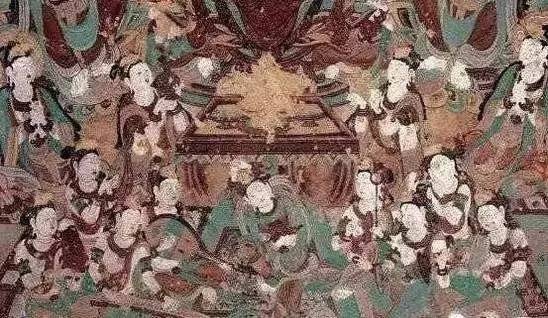
However, "What kind of existence is music in Dunhuang frescoes?" Perhaps, you will question the word "music" in it. Music historian Mr. Yang Yinliu once lamented that "the history of ancient Chinese music is a history of mute music without music". Could it be that music is just a beautiful fantasy in Dunhuang frescoes?
In recent years, a group of artists and researchers have devoted themselves to the restoration of Dunhuang musical instruments, the interpretation of ancient musical scores and the creation of music. In fact, in the past two years, relevant scholars, instrument makers, and musicians have restored a number of musical instruments in Dunhuang murals and created musical repertoires, such as the innovative repertoire "Impression · Chinese Music" previously launched by the Central Chinese Orchestra. The musical instrument factory also spent many years restoring Dunhuang wall instruments, or Ye Dong and other generations of scholars' interpretation of Dunhuang music scores, and Shangyin Professor Zhao Weiping's research on Dunhuang topics. These seem to be gradually satisfying our desire to "hear" Dunhuang ancient music.
The Restoration and Performance of Dunhuang Musical Instruments
However, there are still some unresolved problems on this road of exploration. For example, how to make it more than just musical instruments? How to break through the limitations of certain musical instrument materials and crafts to adapt to modern performance? How to go from restoring musical instruments to resurrecting music? To answer this series of questions, it seems that historical research, musical instrument production, music creation, and even musical instrument performance are involved in thinking.
Therefore, Dunhuang music is both real and illusory. The real exists in the beautiful frescoes, and the unreal lies in its elusive and reproducible sound.
Guess you like
Hot news
- 01 The handsome guy in 1997 is so advanced in pulling erhu! Netizen: Come and "wash your ears"
- 02 The Simple Difference Between Guqin, Se, and Guzheng
- 03 Dulcimer exam and performance repertoire
- 04 The difference between the five-stringed lute and the four-stringed lute
- 05 The difference between cymbals and cymbals in ethnic musical instruments
 渝公网安备 50010702504639号
渝公网安备 50010702504639号